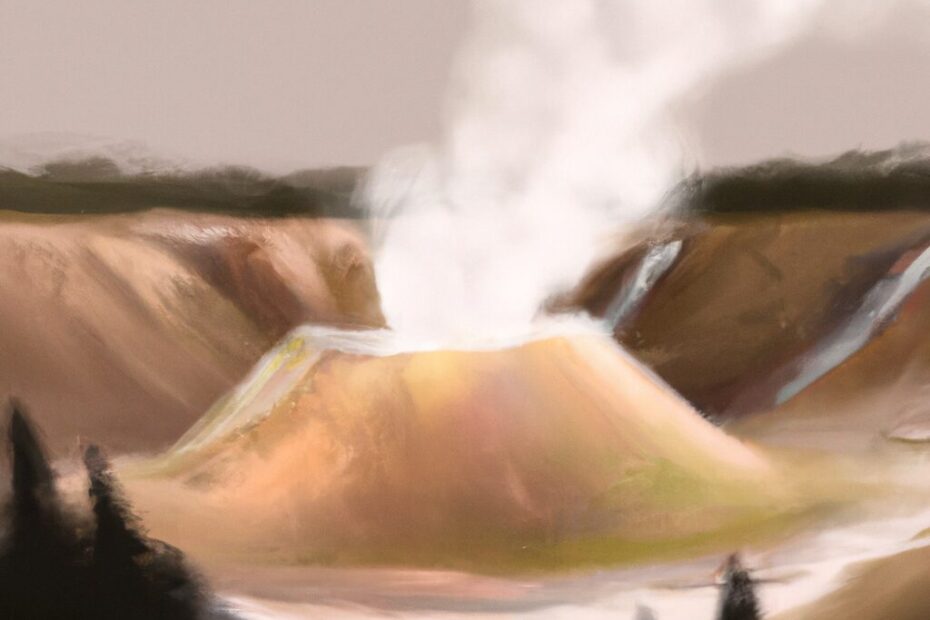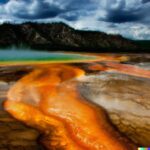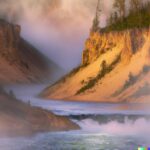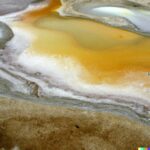Planning a visit to Yellowstone National Park? From getting there to where to stay and what to see, there’s a lot to consider. Whether you prefer traveling by car, plane, or bus, we’ve got you covered. And with the park’s diverse seasons, each offering unique experiences, we’ll help you decide on the best time to go. From must-see attractions like Old Faithful Geyser to outdoor activities like hiking and wildlife viewing, there’s something for everyone. So, let’s dive in and make the most of your trip to this iconic national park!
How to Get to Yellowstone National Park?
Yellowstone National Park, located in the western United States, can be accessed by various means of transportation.
Travelers heading to Yellowstone National Park have the option of driving their own vehicles, offering the flexibility to explore the park at their own pace. For those coming from farther distances, they can opt for convenient plane connections to nearby airports such as Bozeman Yellowstone International Airport or Jackson Hole Airport, followed by a picturesque drive to the park. In addition, bus services like the Yellowstone National Park Bus Tours provide guided transportation within the park, offering visitors informative and hassle-free travel options.
By Car
Embarking on a road trip to Yellowstone National Park is a popular choice for visitors seeking a scenic and flexible travel experience through diverse landscapes.
Traveling to Yellowstone by car offers the freedom to explore at your own pace and immerse yourself in the beauty of nature. One of the popular routes to the park is taking the scenic drive through Grand Teton National Park, where you can witness breathtaking mountain vistas and abundant wildlife.
Along the way, be sure to pack road trip essentials like snacks, water, maps, and a camera to capture the stunning sights. Don’t miss iconic landmarks such as Old Faithful, Grand Prismatic Spring, and Yellowstone Lake for memorable experiences during your journey.
By Plane
For travelers covering long distances, flying to Yellowstone National Park provides a quick and convenient way to reach this natural wonderland.
Upon arrival, visitors have several airport options to consider.
- Bozeman Yellowstone International Airport, located about 90 miles from the park, is a popular choice, offering regular flights from major cities like Denver, Salt Lake City, and Minneapolis.
- Cody/Yellowstone Regional Airport, situated closer to the east entrance, also provides air travel access.
From these airports, travelers can easily arrange ground transportation to reach their desired destinations within Yellowstone National Park, ensuring a seamless transition from the skies to the scenic landscapes below.
By Bus
Exploring Yellowstone National Park through bus services offers a hassle-free and eco-friendly mode of transportation that allows visitors to relax and enjoy the scenery.
- Guided tours are a popular option for travelers looking for a structured and informative way to see the park’s highlights, with knowledgeable guides providing insights into the park’s history and unique features.
- Shuttle services within the park make it easy for visitors to access different areas without the stress of navigating unfamiliar roads, while also reducing traffic congestion and minimizing environmental impact.
- Public transportation options encourage sustainable travel practices, making it convenient for tourists to leave their cars behind and contribute to the preservation of Yellowstone’s natural beauty.
When is the Best Time to Visit Yellowstone National Park?
Determining the best time to visit Yellowstone National Park depends on the seasonal experiences and activities that align with your travel preferences.
-
During the summer months, Yellowstone National Park is a paradise for outdoor enthusiasts, offering opportunities for hiking, wildlife spotting, and camping in the pleasant weather.
-
Fall transforms the park into a breathtaking canvas of vibrant colors as the foliage changes, making it a photographer’s dream.
-
Winter brings a snow-covered wonderland, perfect for snowshoeing, cross-country skiing, and witnessing the park’s serene beauty.
-
Spring sees the park come to life with blooming wildflowers and newborn wildlife, ideal for nature walks and birdwatching enthusiasts.”
Summer (June-August)
Summer in Yellowstone National Park offers vibrant landscapes, abundant wildlife sightings, and a plethora of outdoor activities for visitors seeking an adventurous vacation.
The park’s hiking trails wind through valleys and forests, providing stunning views of geysers, waterfalls, and colorful hot springs. Families can enjoy guided wildlife excursions to spot bison, elk, and grizzly bears in their natural habitat. Camping under the starlit skies at designated sites allows for a truly immersive experience in nature. Don’t miss the iconic attractions like Old Faithful, Mammoth Hot Springs, and Grand Canyon of the Yellowstone, which are sure to create lasting vacation memories.
Fall (September-November)
Fall in Yellowstone National Park showcases nature’s vibrant colors, offers prime wildlife viewing opportunities, and provides a serene atmosphere for visitors to enjoy the changing seasons.
As the autumn unfolds in Yellowstone, the park’s resident wildlife becomes more active, making it a perfect time for wildlife enthusiasts to catch a glimpse of bears, elk, wolves, and various bird species.
The crisp air and golden hues of the trees create a picturesque backdrop for nature walks, inviting visitors to immerse themselves in the tranquility of the season.
Wildlife photographers flock to the park during fall to capture stunning images of animals against the backdrop of foliage in its full autumnal splendor.
Winter (December-February)
Winter transforms Yellowstone National Park into a snow-covered wonderland, offering unique opportunities for snowshoeing, cross-country skiing, and experiencing the park’s serene beauty in a tranquil setting.
As visitors venture into the winter landscape, they can witness the park’s iconic wildlife leaving tracks in the fresh snow, adding to the enchanting atmosphere. The thermal features, such as geysers and hot springs, create a captivating contrast against the white blanket of snow, showcasing the park’s geothermal wonders even in the coldest months. Travelers can explore these marvels while enjoying the cozy accommodations at park lodges, making for a magical winter getaway in the heart of nature’s frosty embrace.
Spring (March-May)
Spring brings a sense of renewal to Yellowstone National Park as the landscape awakens with blooming wildflowers, newborn wildlife sightings, and the promise of outdoor adventures amidst nature’s awakening.
The vibrant hues of yellow balsamroot, purple lupine, and fiery Indian paintbrushes splash color across the meadows, inviting visitors to explore the diverse ecological tapestry.
Witnessing baby bison playfully frolicking alongside their mothers or adorable elk calves taking their first wobbly steps adds an enchanting touch to the park experience.
As the trails thaw from winter’s grip, early-season hikers can savor the crisp mountain air and trace the flowing streams and rivers, accentuating the harmonious transition of seasons in this captivating landscape.
Where to Stay in Yellowstone National Park?
Choosing the right accommodation in Yellowstone National Park is essential for a comfortable and memorable stay amidst the stunning natural surroundings.
- Yellowstone National Park offers a variety of lodging options to suit different preferences and budgets. From historic lodges like Old Faithful Inn and Lake Yellowstone Hotel to cozy cabins in various areas of the park, visitors have a range of choices.
- For those looking to be closer to nature, campgrounds are scattered throughout the park, providing a more rustic experience. Adventurous souls can opt for backcountry camping, allowing them to immerse themselves fully in the wilderness.
Whichever option you choose, the accommodations in Yellowstone will enhance your overall experience in this iconic national park.
Lodges and Cabins
Staying in lodges and cabins within Yellowstone National Park offers a blend of rustic charm, modern amenities, and proximity to the park’s iconic attractions for an immersive nature experience.
Nestled among towering pine trees, these cozy accommodations provide a welcoming retreat after a day of exploring the park’s wonders. From the historic Old Faithful Inn with its iconic stone façade to the secluded cabins dotting the riverside, there is a range of options to suit every traveler’s preferences.
Some lodges offer stunning panoramic views of the surrounding wilderness, perfect for enjoying a morning cup of coffee or stargazing at night. Booking a stay in these sought-after accommodations ensures a memorable and comfortable visit to Yellowstone National Park.
Campgrounds
Immersing yourself in the great outdoors by camping in Yellowstone National Park allows you to connect with nature, experience starlit skies, and enjoy the sounds of wildlife in their natural habitat.
Yellowstone National Park offers a variety of camping options to cater to different preferences. For those seeking convenience, the developed campgrounds provide amenities such as restrooms, showers, and even stores within the park. RV sites with hookups are also available for those traveling with trailers or motorhomes. If you prefer a more rugged experience, tent camping areas nestled among the pine trees offer a rustic retreat. It’s important to remember to follow wildlife safety guidelines to ensure a harmonious coexistence with the park’s inhabitants while enjoying your outdoor adventures.
Backcountry Camping
For adventurers seeking solitude and wilderness immersion, backcountry camping in Yellowstone National Park offers unparalleled opportunities to explore remote landscapes and experience true outdoor solitude.
With over 900 miles of hiking trails meandering through the park’s rugged terrain, backcountry campers can embark on multi-day adventures surrounded by pristine nature. It is crucial for campers to obtain the necessary permits before setting out on their journey, as regulations are in place to protect both visitors and the park’s ecosystem.
Adhering to Leave No Trace principles is essential to minimize environmental impact, ensuring that future generations can also enjoy the beauty of Yellowstone’s backcountry responsibly.
What Are the Must-See Attractions in Yellowstone National Park?
Yellowstone National Park boasts a diverse array of must-see attractions that showcase its geological wonders, wildlife diversity, and natural beauty.
- From the world-famous Old Faithful Geyser that erupts at regular intervals, captivating visitors with its spectacular display of water and steam, to the vibrant hues of the Grand Prismatic Spring, the park offers a rich tapestry of colors and geothermal marvels.
- The Grand Canyon of the Yellowstone, with its thundering waterfalls and striking canyon walls, provides breathtaking vistas that never fail to awe visitors.
- As you venture into Lamar Valley, known as the ‘Serengeti of North America,’ keep an eye out for bison herds, wolves, and grizzly bears roaming amidst the vast wilderness.
Old Faithful Geyser
Visiting the Old Faithful Geyser in Yellowstone National Park is a mesmerizing experience that showcases the geothermal wonders and natural rhythms of the park’s geysers.
Its iconic eruptions, which occur on average every 90 minutes, shoot scalding water up to 180 feet into the air, creating a breathtaking spectacle against the backdrop of the rugged Wyoming landscape. The predictability of Old Faithful’s eruptions has made it a favorite subject for nature photographers, allowing them to capture the raw power and beauty of nature in action. This makes it not only a geological marvel but also a photogenic hotspot that draws visitors from around the world to witness its awe-inspiring displays.
Grand Prismatic Spring
The vibrant hues and ethereal beauty of the Grand Prismatic Spring in Yellowstone National Park make it a must-see attraction for visitors seeking surreal landscapes and captivating natural wonders.
Surrounded by a sunlit boardwalk, this thermal pool boasts an otherworldly blend of colors that range from deep blue to fiery orange, drawing in spectators from around the globe. The geological formations around the spring create a mesmerizing contrast with its crystal-clear waters, offering a glimpse into the Earth’s ancient processes.
Guided tours provide in-depth insights into the science behind the spring’s vibrant palette and its significance in the park’s unique ecosystem, making it an educational and visually stunning experience for all who visit.
Grand Canyon of the Yellowstone
The majestic Grand Canyon of the Yellowstone offers awe-inspiring vistas, thundering waterfalls, and geological marvels that showcase the park’s dramatic landscapes and natural sculpting over millennia.
As visitors venture along its winding trails, they encounter a myriad of scenic overlooks where the vivid colors of the canyon walls, ranging from deep reds to vibrant yellows, create a breathtaking canvas.
The geologic history preserved within the layers of rock formations tells a fascinating story of the Earth’s ever-changing past. Hiking enthusiasts can explore diverse trails that lead to hidden gems and panoramic viewpoints, providing unparalleled opportunities to immerse themselves in the untamed beauty of this natural wonder.
Lamar Valley
Lamar Valley in Yellowstone National Park is a wildlife enthusiast’s paradise, offering prime opportunities for spotting iconic species such as bison, wolves, and grizzly bears in their natural habitats.
The picturesque landscape of Lamar Valley serves as the backdrop for unforgettable wildlife photography experiences. Visitors can capture stunning images of these majestic creatures against the backdrop of the sweeping valleys and rugged mountains.
To enhance your wildlife excursion, be sure to attend ranger programs that provide valuable insights into the park’s diverse ecosystem and conservation efforts. When venturing into the wilderness, it’s crucial to prioritize bear safety by carrying bear spray, making noise, and staying alert to signs of bear activity.
By practicing responsible wildlife viewing and following safety guidelines, visitors can contribute to the ongoing conservation efforts aimed at preserving these precious species for future generations.”
What Outdoor Activities Can You Do in Yellowstone National Park?
Yellowstone National Park offers a myriad of outdoor activities for nature enthusiasts, including hiking, wildlife viewing, fishing, boating, and horseback riding amidst its breathtaking landscapes.
Exploring the park’s extensive network of hiking trails is a must-do for visitors looking to immerse themselves in the park’s natural beauty. From leisurely strolls through meadows alive with wildflowers to challenging climbs to stunning viewpoints, there is a trail for every skill level. Wildlife hotspots like Lamar Valley or Hayden Valley offer excellent opportunities to observe iconic species like bison, elk, and grizzly bears in their natural habitats.
Fishing enthusiasts can test their skills in the park’s pristine waters teeming with trout, while thrill-seekers can embark on thrilling whitewater rafting adventures down the Yellowstone River for an adrenaline-packed experience.
Hiking
Exploring Yellowstone National Park through its extensive network of hiking trails allows visitors to immerse themselves in the park’s natural beauty, witness geothermal features, and encounter diverse wildlife along the way.
The park offers hiking trails catering to all levels of experience, from gentle strolls to challenging treks. Beginners can enjoy the easy boardwalks of the geothermal basins like the Upper Geyser Basin, while seasoned hikers may seek the thrill of trails like the Mount Washburn Trail offering panoramic views. Ranger-guided hikes provide insightful narratives on the park’s geological wonders, enhancing the hiking experience. To ensure a safe adventure, visitors are advised to stay on marked trails, carry sufficient water, and be bear-aware by making noise along the trail.
Wildlife Viewing
Wildlife viewing in Yellowstone National Park offers enchanting encounters with iconic species such as bears, wolves, elk, and bison, providing unforgettable moments for nature lovers and photographers.
Exploring the prime wildlife hotspots in Yellowstone, visitors can head to Lamar Valley, Hayden Valley, and the shores of Yellowstone Lake for the best chances of spotting these magnificent creatures in their natural habitat.
Ranger programs and naturalist excursions are available to enhance the wildlife viewing experience, offering valuable insights into the behavior and ecology of the park’s diverse fauna.
When capturing these remarkable moments through wildlife photography, remember to maintain a safe distance, respect wildlife’s space, and prioritize their well-being over getting the perfect shot.
Fishing
Fishing in the pristine waters of Yellowstone National Park’s rivers, lakes, and streams offers anglers the chance to reel in prized trout species amidst stunning natural backdrops and tranquil surroundings.
Whether you’re a novice angler or a seasoned fishing enthusiast, Yellowstone’s waters provide a diverse range of habitats that cater to different fishing preferences. From the fast-flowing rivers to the calm lakes and meandering streams, there’s something for everyone.
Anglers must ensure they have the necessary fishing permits and adhere to the park’s regulations to preserve the delicate ecosystem. The fishing season in Yellowstone typically runs from late May to November, with peak angling times varying depending on the water body.
Popular angling spots include the Yellowstone River, Yellowstone Lake, and Firehole River, each offering unique angling adventures to be explored.
Boating
Boating on the pristine waters of Yellowstone National Park’s lakes and rivers offers a serene and scenic way to explore the park’s aquatic landscapes and witness its natural beauty from a different perspective.
Whether you are looking to embark on a leisurely lake cruise or engage in thrilling water recreation, Yellowstone National Park boasts a variety of boating opportunities to suit every preference. Visitors can easily rent boats from local outfitters to navigate the crystal-clear waters while adhering to important water safety guidelines. Some of the most popular boating destinations within the park include the expansive Yellowstone Lake, where travelers can enjoy peaceful scenic boat tours surrounded by breathtaking mountain vistas and diverse wildlife.
Horseback Riding
Embarking on a horseback riding adventure in Yellowstone National Park allows visitors to traverse rugged terrains, scenic trails, and pristine meadows while experiencing the park’s wilderness from a horse’s perspective.
The guided tours offered in the park provide a unique opportunity for horseback excursions, allowing riders to explore the diverse landscapes under the guidance of experienced wranglers. Equestrian services in Yellowstone cater to riders of all levels, ensuring a safe and enjoyable experience for everyone. Saddle adventures are a popular choice for those seeking an authentic Western riding experience, immersing themselves in the rich history and culture of the region while soaking in the breathtaking views along the trail rides.
What Are Some Tips for Visiting Yellowstone National Park?
Planning ahead, preparing for changing weather conditions, and respecting park rules are essential tips for a safe and enjoyable visit to Yellowstone National Park.
When planning your trip to Yellowstone, it’s important to pack layers of clothing for varying temperatures and sudden weather shifts. Be sure to check the park’s regulations on camping, hiking, and wildlife interaction before your arrival to ensure a smooth experience. Wildlife encounters are common in the park, so maintaining a safe distance and never feeding the animals are crucial for both your safety and theirs. Remember to carry essentials like water, snacks, a map, and a first aid kit for any unexpected situations during your visit.
Plan Ahead
Effective trip planning is crucial for maximizing your experience in Yellowstone National Park, from securing accommodations to mapping out your itinerary and booking tours in advance.
When planning your visit to Yellowstone, ensure you make accommodation reservations well in advance to secure your preferred lodging options within the park or in nearby communities.
Utilizing park maps and online resources can help you design a comprehensive itinerary that highlights must-see attractions, hiking trails, and designated wildlife viewing areas.
Consider booking guided tours for unique insights into the park’s geothermal wonders, historical sites, and abundant wildlife.
By taking these steps, you can create a seamless and unforgettable Yellowstone vacation complete with immersive experiences and awe-inspiring natural beauty.
Be Prepared for Changing Weather
Yellowstone National Park’s weather can be unpredictable, so packing layered clothing, rain gear, and essentials for varying conditions is essential for a comfortable and adaptable outdoor experience.
It’s crucial to prepare for a wide range of temperatures when exploring this iconic park. Be sure to include moisture-wicking base layers, insulating mid-layers, and a waterproof outer shell in your clothing selection.
Don’t forget to pack sturdy hiking boots to navigate the diverse terrain and protect your feet. Considering the changing weather patterns, having a reliable weather app on your phone can help you stay updated on forecasts and plan your activities accordingly.
Being well-prepared with the right outdoor gear and travel accessories can make all the difference in enjoying your time at Yellowstone National Park.
Follow Park Rules and Regulations
Adhering to Yellowstone National Park’s rules and regulations is crucial for preserving the park’s natural beauty, ensuring visitor safety, and respecting the diverse wildlife that call this iconic destination home.
These guidelines serve as a framework for maintaining the delicate balance between human interaction and nature preservation. By following park etiquette such as staying on designated trails, refraining from littering, and keeping a safe distance from wildlife, visitors contribute to the conservation efforts that are essential for the longevity of this unique ecosystem.
Understanding and adhering to wildlife regulations, such as refraining from feeding animals and approaching them at a safe distance, not only safeguards the well-being of the animals but also enhances the overall experience for everyone visiting the park. Responsible visitor behavior is not only about personal safety but also about showing respect for the natural environment and ecosystem that makes Yellowstone National Park a global treasure.
Respect Wildlife and Nature
Respecting the wildlife and natural landscapes of Yellowstone National Park is essential for fostering a harmonious coexistence with nature, preserving habitats, and ensuring the long-term conservation of this pristine environment.
By practicing responsible tourism, visitors can play a crucial role in maintaining the delicate balance of the ecosystem within the park. It is important to follow designated trails, keep a safe distance from wildlife, and avoid feeding any animals to prevent unnatural interactions.
Yellowstone’s park stewardship programs emphasize the significance of respecting wildlife habitats and reducing human impact on the environment. Conservation efforts include habitat restoration projects and community engagement programs to raise awareness about the importance of preserving biodiversity in this iconic national park.
Last Updated on February 11, 2024 by Jon Waraas – Originally Posted: February 11, 2024

I’m Jon Waraas, and I’ve been navigating the online world since 2006. By day, I’m the proud owner of some eCommerce gems, and by night, I’m the voice behind the adventures on Waraas.Com.
My heart, however, belongs to the wild beauty of Yellowstone National Park. I’ve got a collection of websites dedicated to sharing the wonders of this natural masterpiece. Oh, and did I mention? I’m currently building my own cabin inside the ghost town of Gilmore, Idaho – a cabin with tales to tell!
When I’m not immersed in the digital realm, you’ll find me lacing up my boots for a good hike or setting up camp under the star-studded sky.




